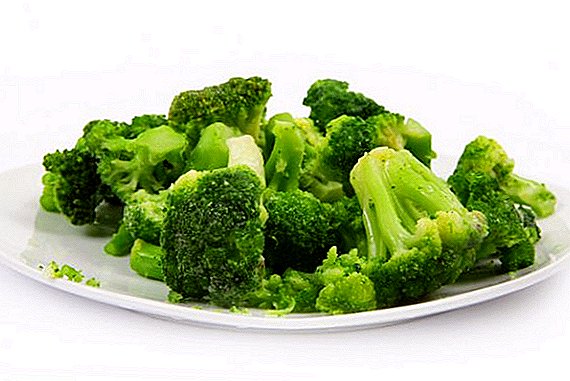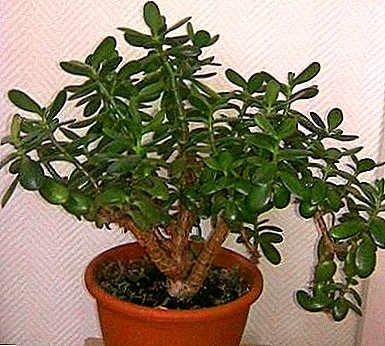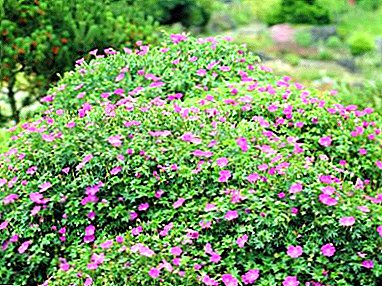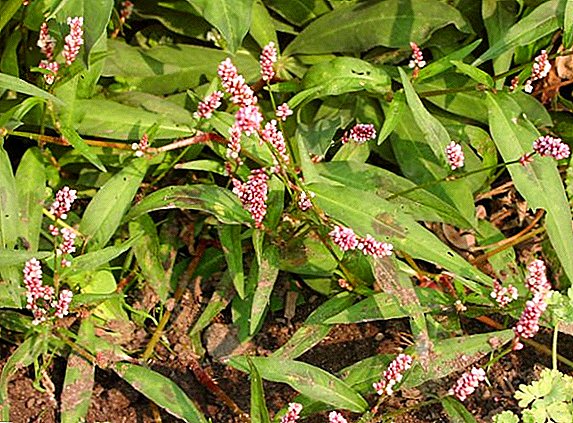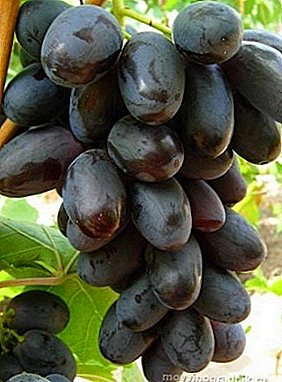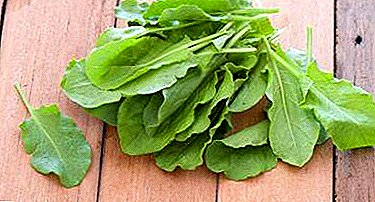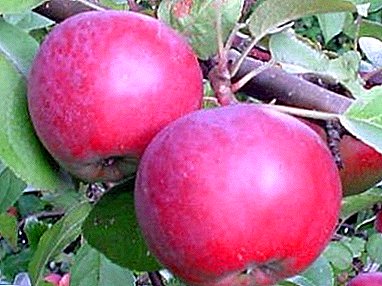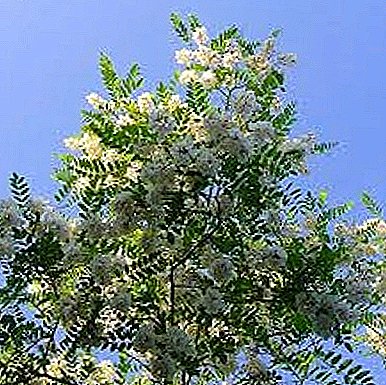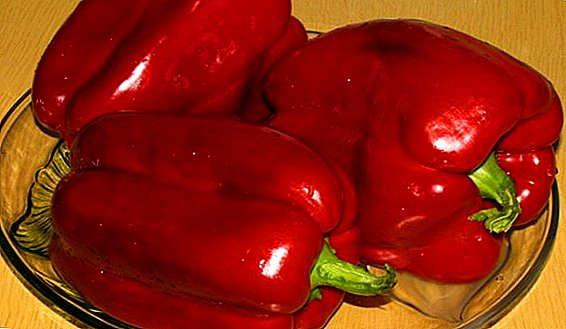 Sweet or Bulgarian pepper is very popular, especially early ripe varieties, allowing you to quickly harvest before the onset of cold weather. The Pharaoh F1 has won a worthy place among them, it not only ripens quickly, but also is characterized by tasty large fruits. This variety can grow and you, if you familiarize yourself with the conditions of plant care.
Sweet or Bulgarian pepper is very popular, especially early ripe varieties, allowing you to quickly harvest before the onset of cold weather. The Pharaoh F1 has won a worthy place among them, it not only ripens quickly, but also is characterized by tasty large fruits. This variety can grow and you, if you familiarize yourself with the conditions of plant care.
Hybrid description
Pepper "Pharaoh F1" - is a hybrid variety, that is, derived by crossing early varieties. It is distinguished from other species by increased yield and early ripeness, as well as the possibility of planting both in open ground and in greenhouses. 
Important! Pepper "Pharaoh", like other hybrid varieties, is not suitable for reproduction by seeds collected independently, since its qualities are lost. Seeds need to be bought annually.
Bushes
The shrubs of the plant consist of a main stem, from which the shoots branch off. Those that have appeared recently - soft and green, become hard. The height of the bush is medium, the shape is easily spreading. Green leaves, elongated, grow on petioles. Between petioles and branches flowers grow. The plant can be self-pollinated or by insects.
To early ripening can be attributed such varieties of pepper as: "Flamenco f1", "Claudio F1", "Atlas" and "Orange Miracle".
Fruit
Peppers are juicy, moderately sweet, have an excellent taste, thick-walled - up to 8 mm thick, resemble a prism in shape, drooping. At the beginning of maturity, they are colored yellow. If at this time they are not plucked, gradually turn red, covered with shiny skin.  This variety is characterized by large fruits weighing up to 160 g, which are divided inside into 3 or 4 chambers. In them are the seeds of a light yellow color, flat, rounded shape.
This variety is characterized by large fruits weighing up to 160 g, which are divided inside into 3 or 4 chambers. In them are the seeds of a light yellow color, flat, rounded shape.
Growing conditions
Pepper "Pharaoh F1" planted seedling way. First you need to prepare the seeds: for this purpose they need to be poured with water heated to 50 ° C and left to swell. After that, the water is drained, the seeds are wrapped in a damp cloth and left for 2 days. Now they are ready for landing.
Planting seeds is carried out from 10 to 20 March. A layer of drainage and a small layer of soil, which must be decontaminated and well-fertilized, are poured into prepared containers. Top seeds are covered with soil, sprinkled with earth, watered and covered with foil. The next watering is carried out after the appearance of the first shoots. Water for irrigation is better to take warm.
Hybrid varieties of pepper are very persistent, and include the Gipsi F1, Gemini F1 and Kakadu varieties.
When the first two leaves appear on the seedlings, the plants are fertilized - 1 g of potassium fertilizers, 0.5 g of ammonium nitrate and 3 g of superphosphate are dissolved in 1 l of water. After 2 weeks, the procedure is repeated, increasing the dosage by 2 times. Since the plant is very sick after picking, you can instead gradually pour soil into the container to the level of cotyledon leaves.
Important! The optimum temperature for growth "Pharaoh F1" - from 20 to 25°C if it is below 12°C, it will not grow, so the seeds are planted on seedlings in mid-March, and the seedlings are transplanted into open ground in mid-May.Place for planting is chosen in advance. - it should be protected from drafts, well lit, 3 years in this place should not grow eggplants, tomatoes, potatoes and other nightshade. Good land after pumpkin, cabbage, legumes, root crops. In the autumn, the site needs to be dug up, fertilized with phosphates and potash fertilizers at the rate of 50 g per 1 sq. Km. m. Organic fertilizers are applied at the rate of 5 kg per 1 sq. m. In spring, the soil is fertilized with ammonium nitrate (40 g) and disinfected with blue vitriol (1 tablespoon diluted with water).
 The next time the soil is fertilized 2 weeks after the ovary. For planting seedlings is better to choose a cloudy day or spend it in the evening. When planting, use a 40 * 40 cm scheme, considering that the height of the bed should be at least 25 cm, and between rows should be 70 cm. In the pits recommend to pour chopped egg shells or wood ash. After planting, the peppers are watered with warm water at the rate of 1-2 liters per 1 plant, and when the water is absorbed, they mulch with dry straw or peat. Pepper "Pharaoh F1" likes frequent watering (1 time per week, in the heat - 2 times), but in the case of mulching you can water it once every 10 days.
The next time the soil is fertilized 2 weeks after the ovary. For planting seedlings is better to choose a cloudy day or spend it in the evening. When planting, use a 40 * 40 cm scheme, considering that the height of the bed should be at least 25 cm, and between rows should be 70 cm. In the pits recommend to pour chopped egg shells or wood ash. After planting, the peppers are watered with warm water at the rate of 1-2 liters per 1 plant, and when the water is absorbed, they mulch with dry straw or peat. Pepper "Pharaoh F1" likes frequent watering (1 time per week, in the heat - 2 times), but in the case of mulching you can water it once every 10 days.Learn how to sow pepper in seedlings and how to grow quality seedlings.
Watering is carried out at the root, fruits and leaves are not recommended to be watered. Water consumption should be: 12 liters per 1 square. m. When the plant begins to bloom and bear fruit, consumption will be 14 liters per 1 square. m, and the frequency of irrigation should be 2-3 times a week. Pepper care also includes loosening the soil, hilling, weed removal, cracking, and garter as needed. To loosen the soil to a depth of no more than 5 cm, so as not to damage the roots. The shrub of the plant is formed on 2 stems, the rest are removed, and weak branches are also cut off.  Neighbors for pepper "Pharaoh F1" can be any tall plants that are able to protect from the wind. Just do not plant near hot peppers - cross-pollination will lead to the fact that all the peppers will be bitter. If you plan to plant the "Pharaoh F1" in the greenhouse, then the soil temperature should be maintained at 15 ° C at an air temperature of 20 ° C. Planting scheme and conditions of pepper care are similar to planting in open ground, but planting in a greenhouse can be done earlier.
Neighbors for pepper "Pharaoh F1" can be any tall plants that are able to protect from the wind. Just do not plant near hot peppers - cross-pollination will lead to the fact that all the peppers will be bitter. If you plan to plant the "Pharaoh F1" in the greenhouse, then the soil temperature should be maintained at 15 ° C at an air temperature of 20 ° C. Planting scheme and conditions of pepper care are similar to planting in open ground, but planting in a greenhouse can be done earlier.
Resistance to environmental conditions and diseases
This variety of pepper is not affected by viral diseases (strick, tobacco mosaic, etc.), but it may suffer due to the absence of magnesium in the soil. In this case, the symptoms appear the same as in viral diseases - the leaves dry, fall off. Low temperature, delayed watering or, conversely, excessive, also have a bad effect.
Read also about how to deal with diseases and pests of pepper.
Among the diseases can be identified fungal:
- verticillosis - the fungus that causes browning and wilting of the plant. For prevention, it is recommended to carefully plant the seedlings so as not to damage the roots;

- alternarioz - it is characteristic for the pepper growing in the greenhouse, arises from temperature difference. For the fight using Bordeaux liquid;
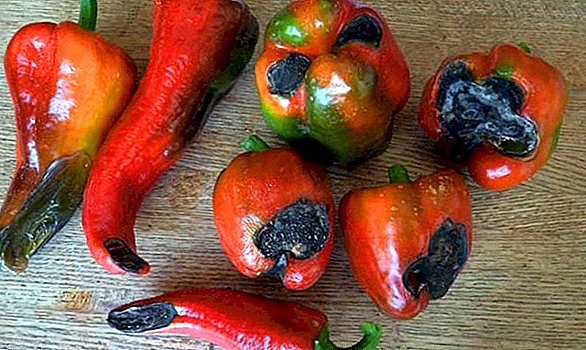
- blackleg - occurs at low temperatures and high humidity. For prevention, it is recommended to observe the temperature and irrigation conditions, to decontaminate the soil before sowing. To combat using loosening the soil and spraying drugs;
- withering - characteristic of seedlings, which gradually dies. For the fight using antifungal drugs;

- spotted wilting - the plants appear purple spots, increasing in size, on the peppers dark or yellow rings are formed. For the fight using antifungal drugs;

- white, gray or apical rot - the appearance of stains, rotting plants. To combat using fungicides, diseased plants are removed. A means of prevention is compliance with the conditions of cultivation.
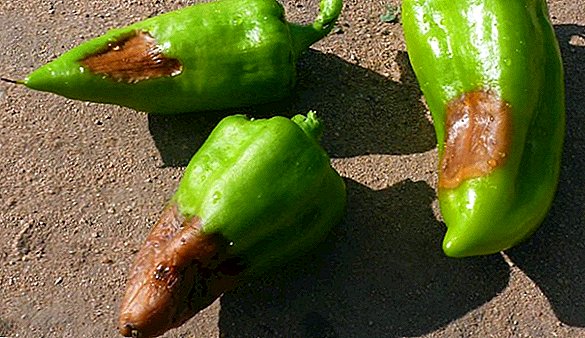
Pests are also dangerous:
- Aphid - small insects that suck juices from pepper. To fight using insecticides or folk remedies.
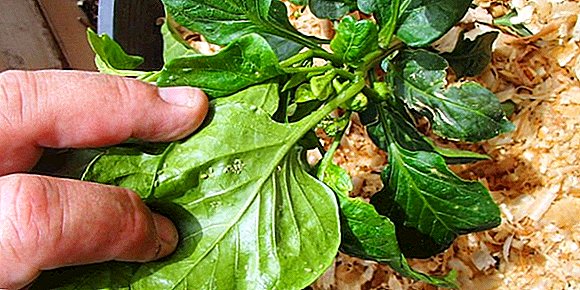
- Spider mite - a parasite that lives on the inner side of the leaves, the symptom is a small web on the leaves. The plant is treated with an infusion of garlic or onions with soap and dandelion leaves.
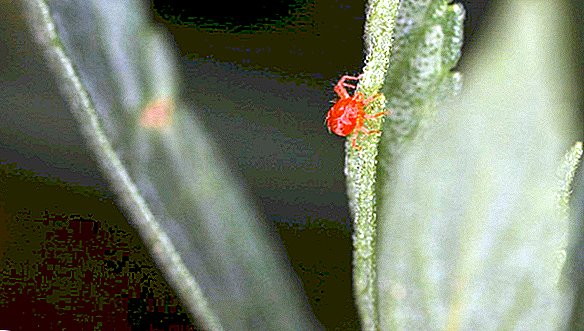
- Slugs - these pests destroy not only the leaves, but also the fruits. Well helps loosening the soil, sprinkling with mustard powder.
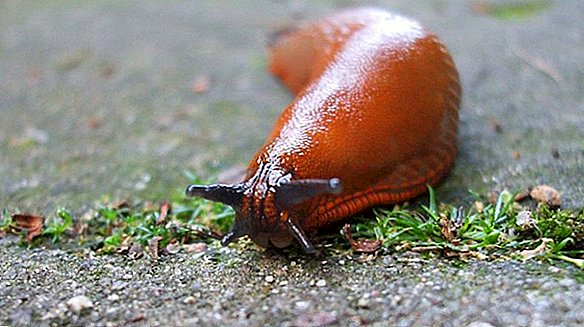
- Colorado beetle - for the prevention, it is recommended to plant a string bean next to it, the smell of which the beetle is afraid of. The fight against the pest is to collect beetles by hand, spraying tincture of celandine.
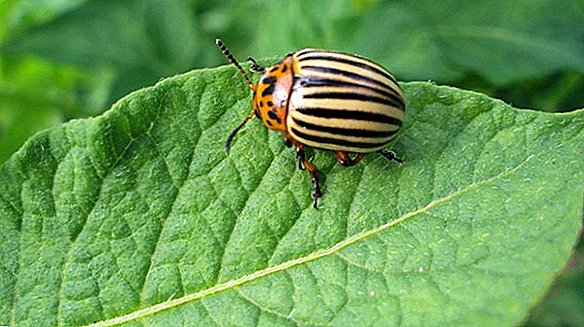
Did you know? Since the first discovery of the Colorado potato beetle in 1824, it has spread throughout the world and has become a real "plague", but in Norway, Japan, Denmark, Ireland, Tunisia, Israel, Sweden, Algeria, and Morocco are still not familiar with it.
Gestation period
The pepper "Pharaoh F1" fruits ripen in 62-65 days from transplanting, while there are 2 types of maturity:
- technical;
- biological.
Yield
Harvesting begins in mid-July and ends in late August. "Pharaoh F1" refers to high-yielding varieties, from 1 sq. M. m square, you can collect up to 7.5 kg of pepper. The ripened fruits of pepper must be regularly removed (every 4-5 days), otherwise the flowering becomes slower. Fruits that are not harvested before the onset of frost will be poorly stored. 
Using
The fruits of pepper "Pharaoh" are suitable for use in fresh, frozen, pickled, dried, stewed, fried and other forms.
Did you know? Pepper fruits are male (with 3 chambers) and female (with 4 chambers).Fruits of a male are more suitable for culinary processing, and female - for the fresh use, as they are sweeter.
Familiarize yourself with the different ways of harvesting peppers for the winter.
Freshly squeezed pepper juice is used in traditional medicine for the treatment of:
- stomatitis;
- gingivitis;
- dermatitis;
- lacrimal sac inflammation;
- anemia;
- iodine deficiency and thyroid problems;
- avitaminosis;
- osteoporosis;
- intestinal colic;
- swelling;
- insomnia;
- reducing glucose levels;
- eliminate the problems of the pancreas;
- improve digestion;
- stimulate intestinal contractions;
- prevention of blood clots.
 Sweet pepper is recommended for those who want to preserve the beauty and youthfulness of the skin, to improve the condition of hair and nails. Peppers can be stored in a cold place for up to 2 months.
Sweet pepper is recommended for those who want to preserve the beauty and youthfulness of the skin, to improve the condition of hair and nails. Peppers can be stored in a cold place for up to 2 months.Advantages and disadvantages
The advantages of pepper "Pharaoh F1" include:
- high yield;
- disease resistance (tobacco mosaic virus);
- quick adaptation for transportation and storage;
- early maturation;
- opportunity to plant in open ground and greenhouses.
The disadvantages of this variety include such features:
- Unsuitable for breeding own seeds.
- Loves a warm climate.
- Requires well loosened soil.
- Needs regular watering.
- Protection against frost and drafts is necessary.











